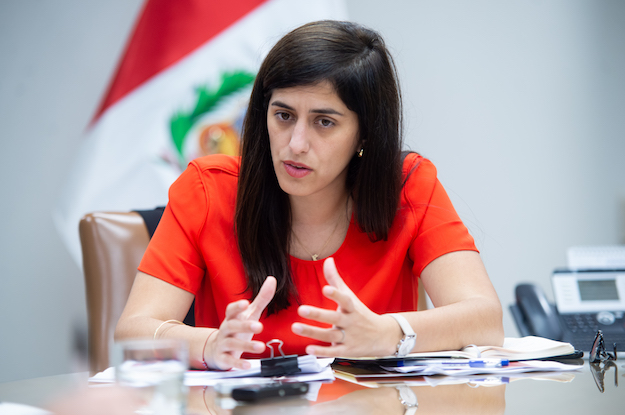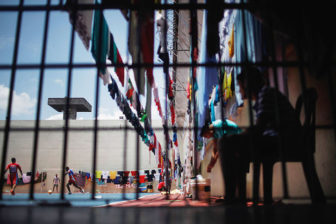Javier Corrales also wrote for AQ Online in March on Latin American Gays: The Post-Left Leftists, examining the innovative and successful political strategies—in action and thinking—adopted by LGBT groups in Latin America in the last decade. —AQ
This month, Argentina changed its civil code to permit gay marriage and adoptions, becoming the first nation in Latin America and the second nation in the lower three-quarters of the planet to do so. Why Argentina, of all places? Not too long ago, Argentina was better known for fascist-style militarism (since the 1930s), dirty wars (until the 1970s), a pointless war (against England in the early 1980s), reckless macroeconomics and presidential crises (until the 2000s), institutional disarray and crazy populism (to this day), and one of the most heterosexual and gender-stereotypical dances in the world (the tango).
To answer the question of why Argentina, conventional arguments help, but only to a point. No doubt, Argentina has many of the conditions that, research has shown, go hand in hand with more pro-gay legislation. It has high levels of urbanization and schooling (the modernization hypothesis) as well as a vibrant constellation of civic organizations (the social movement hypothesis), but so do most countries in the Americas. It has a ruling party that sees itself left of center (the partisan hypothesis), but this is also true of most countries in the Americas today, including the United States. And it has a super gay-friendly main city, but this is also true of at least Brazil, Mexico, the United States, Colombia, Uruguay, Peru, and Costa Rica.
To explain the Argentina puzzle, we thus need to refine conventional arguments. Here are six factors to consider.
First, Catholics don’t go to Church and Evangelicals are (still) small in number. Much has been said about the fact that a Catholic country such as Argentina has approved gay marriage. This is a point worth making because the Catholic Church since 2007, especially under this pope, has become more obsessed with blocking same-sex marriage. In Argentina specifically, the Church actually launched a crusade against this bill, even releasing kids from schools so that they could pressure parents to go protest against the law. Yet, the key statistic to know about Argentina is not so much that it is predominantly Catholic (it is), but rather that church attendance is low—approximately 22 percent of the population attends church services weekly—and secondly, that the Evangelical population is tiny (only 2 percent ). This is perhaps the most important structural difference with the United States and Mexico, where church attendance is high (approximately 45 percent) and Evangelicalism is growing. It also separates Argentina from Brazil, where church attendance is medium (36 percent) and Evangelicalism is more numerous (approximately 15 percent), and from Central America, where Evangelicalism is huge (from 18 percent in Costa Rica to 40 percent in Guatemala). Low church attendance and low Evangelicalism helps predict pro-LGBT legislation because it reveals the extent of societal secularism as well as the mobilizational weakness of the churches. Argentina is distinctive on both counts.
Second, separation of church and party. It is not enough to have separation of church and state, as do most countries in the region. It is vital to have separation of church and party. Although the church’s officialdom is powerful in Argentina, the country has not had a strong confessional party for the past 100 years. There is no strong Christian Democratic party as in Chile and Venezuela. There is no party with strong connections with the Opus Dei as the ruling party in Colombia and Mexico. There is no party with strong connections with Evangelical groups as the Republicans in the United States (and arguably, the Labor Party in Brazil and most parties in Central America and the Anglo-Caribbean). This is one reason that so many legislators in Argentina, from all parties, risked voting against the pulpit.
Third, transnational legalism. Much has been written about how globalization helps to promote LGBT rights. But Argentina shows that there is a type of globalization that is especially helpful, and which incidentally, is scarce in the United States—transnational legalism. This term refers to the ease with which a country’s legal system borrows from international cases to set legal precedents domestically. While most countries in Latin America have a strong tradition of transnational legalism, Argentina is no doubt a regional champion. It is both an avid importer of international norms (since 1994, most international human rights treaties have had constitutional status), and also a voluminous exporter of legal norms, playing active roles in helping international organizations and foreign countries bolster their human rights norms and helping countries establish “truth commissions.” Thus, Argentina’s pro-LGBT forces were quite comfortable emulating norms from abroad, even borrowing verbatim wording and arguments from actors fighting elsewhere to approve LGBT rights. In the United States, this form of international emulation is frowned upon. In Argentina, it actually bolstered the emulators, in part because of the country’s tradition of transnational legalism.
Fourth, domestic legal resources. It would be incorrect to say that Argentina’s pro-LGBT groups drew exclusively from abroad. They also drew from domestic sources. The agenda of the LGBT movement was cast as part of the country’s broader agenda on behalf of feminism, gender, reproduction, health, and sexuality. These issues have been part of Argentina’s legislative agenda for several decades now. Furthermore, a strategy was developed by different LGBT organizations, particularly the Federación Argentina de Lesbianas, Gay, Bisexuales y Trans (Argentina Federation of Lesbians, Gays, Bisexuals and Trans) to encourage gay couples to request marriage licenses, in order to get an official refusal and then challenge the official decision on constitutional grounds. This strategy proved effective. Several judges responded by authorizing marriages, also on constitutional grounds. In less than a year, a dozen gay couples got married that way, even before the new law came into being. The issue was framed as a question of equality before the law, the domestic law. In contrast, the Catholic Church almost took pride in presenting itself outside the law. Its discourse against LGBT folks became so aggressive and discriminatory that even those who were unsure about the morality of the bill were appalled by the extra-constitutionality of the Church’s position. The key lesson is therefore that in addition to transnational legalism, a country needs to have a well grounded legal tradition of equality, liberty and human rights, as well as a set of social movements with expertise in the use of that tradition to its advantage.
Fifth, democracy, yes; referendum democracy, no. Perhaps the most important victory by pro-LGBT groups in Argentina was to avoid the referenda trap. Enemies of Argentina’s gay marriage legislation, including the Catholic Church, offered a populist compromise—submit the issue to a popular vote. In Latin America, at the moment, the concept of participatory democracy is in vogue. But LGBT groups and its allies in Argentina were smart to recognize the problems with this form of populism. Submitting to a majority vote questions of minority rights is inherently a biased process—against the minority group, naturally—and this makes it undemocratic despite its reliance on the popular vote. Argentina thus replicated the path taken by Massachusetts, where gay marriage was approved first through a court ruling and then by legislative vote against the wishes of the anti-gay governor Mitt Romney, who wanted a referendum, and avoided the California and Florida models, which relied on popular vote to disastrous results even though societal tolerance for LGBT folks in those states is presumably high.
Sixth, and lastly, the president presides. Ultimately, what made the law possible was the President’s decision to take the risk of backing the bill. This courageous act is the one factor that is more ad hoc and specific to the case, and yet perhaps it was the most indispensable of all. Analysts debate why at this particular juncture president Cristina Fernández decided to take the risk of a public fight with the Church and a possible split within the ruling party. Perhaps she did this because of the Peronist tradition of confronting the Church openly (while secretly negotiating other agreements). Perhaps this is one more example of this administration’s penchant for open confrontation. Perhaps she did it because the opposition was fragmented and likely to split even more severely than the ruling party. Perhaps she did it because the government needed to recover lost ground among the young and the urbanites, who had abandoned her. Perhaps she ultimately developed a principled conviction of the correctness of gay marriage. Who knows? What matters is that the president took the risk. A few days after the law was approved, Fernández welcomed, for the first time ever, a host of LGBT organizations to the Pink House. That too was historic and gutsy.
In short, the Argentine case suggests ways to refine our thinking on the conditions that make LGBT rights expand. It is important to live in a democracy, of course, but it is more important to avoid referenda democracy. It is important to have separation of church and state, but it is also vital to have secular citizens and secular parties. It is important to have a strong civil society, but civil society must operate in a pro-human rights legal environment that is both globally connected and domestically entrenched. And finally, the country’s maximum leader must show some guts. Ultimately, gay marriage is a piece of legislation that is transforming the way we have thought of democracy for the last three centuries, and it would be disingenuous to believe that this effort can occur without courage.








